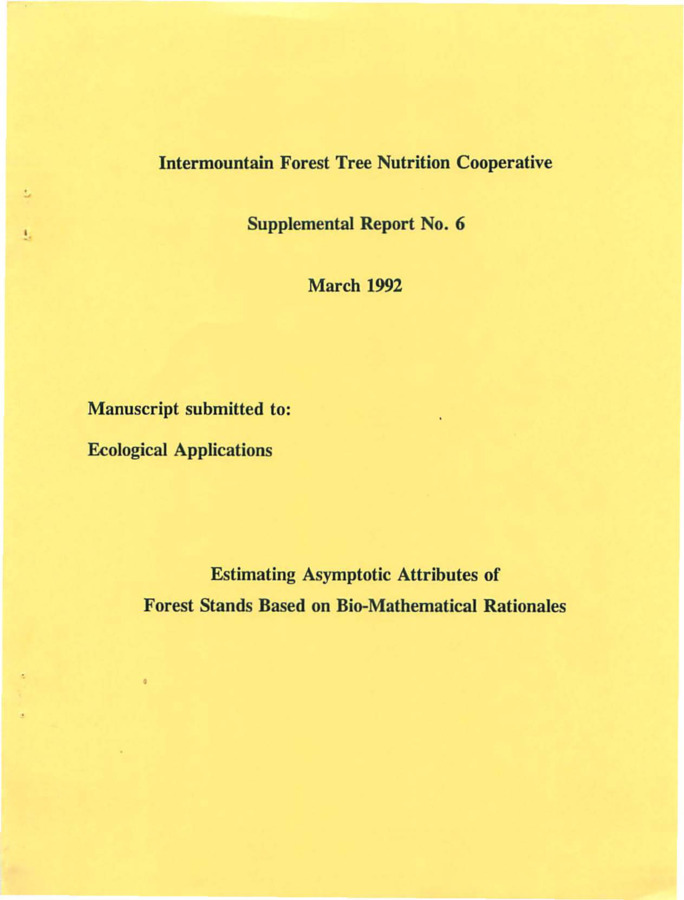PDF
Estimating Asymptotic Attributes of Forest Stands Based on Bio-Mathematical Rationales Item Info
- Title:
- Estimating Asymptotic Attributes of Forest Stands Based on Bio-Mathematical Rationales
- Creator:
- Shang, L.; Moore, J.A.; Newberry, J.D.
- Date Created (ISO Standard):
- 1992-03-02
- Description:
- An approach for estimating asymptotic stand yield, basal area and number of stems per unit area is proposed. Available forest stand growth data are used to establish the reciprocal equation of Competition-Density (C-D) effect and develop equations relating the coefficients of C-D effect to stand top height. Asymptotic stand yield, basal area and number of stems are derived based on bio-mathematical rationales and expressed as functions of asymptotic top height. Asymptotic top height can be obtained for different site qualities and/or habitat types by evaluating a height growth model in the limit as age approaches infinity. Estimated asymptotes can be utilized to parameterize sigmoid-shaped growth functions (e.g. Richards growth model) for developing forest growth and yield models.
- Subjects:
- research data modeling statistics
- Source:
- Zhang, et al. Intermountain Forest Tree Nutrition Cooperative. 1992. Supp. Report No. 6: Estimating Asymptotic Attributes of Forest Stands Based on Bio-Mathematical Rationales. FWR, Univ. of Idaho, Moscow.
- Source Identifier:
- Estimating_Asymptotic_Attributes_of_Forest_Stands_Based_on_Bio-Mathematical_Rationales_IFTNC_1992
- Type:
- Text
- Format:
- application/pdf
Source
- Preferred Citation:
- "Estimating Asymptotic Attributes of Forest Stands Based on Bio-Mathematical Rationales", Intermountain Forestry Cooperative, University of Idaho Library Digital Collections, https://www.lib.uidaho.edu/digital/iftnc/items/iftnc4795.html
Rights
- Rights:
- This document is provided by the University of Idaho Library for use by University of Idaho students, staff, and faculty. All rights to the document linked from this metadata belong to the author, rights holder, and/or provider. For more information contact The Intermountain Forestry Cooperative, https://www.uidaho.edu/cnr/ifc
- Standardized Rights:
- http://rightsstatements.org/vocab/InC-EDU/1.0/

